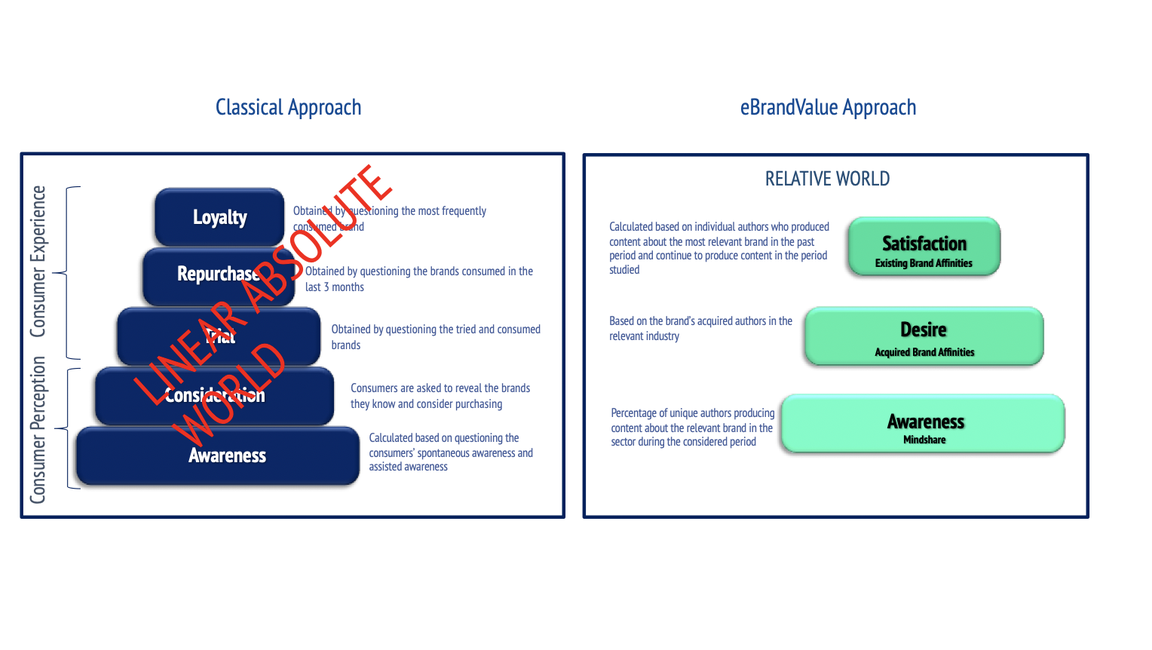Classical approaches seek to investigate a specific brand's awareness, interest, desire and satisfaction, mostly using intervention-based techniques, e.g., surveys. The classical approach takes the view that as long as a brand manager obtains a fat/flat cylinder, see the picture under classical approach in the figure, the brand manager is deemed successful. The dinosaurs of the marketing research firms build models that they claim capture the brand love scores and identify a brand's health, conveniently named as brand-health-tracking (BHT) studies.
Increasingly, conscientious branding professionals question the classical approach's effectiveness. First of all, the metrics are subject to biases inherent in intervention-based techniques - there is a significant doubt on the obtained data's quality. In addition, the classical approach produces metrics in a vacuum and in discrete terms. Thus, the metrics do not properly account for the competitive actions by the competitors. Further, the metrics provide a rear-view mirror and merely explain the past rather than providing a sales-leading role.
In fact, eBrandValue's extensive studies and analyses show that metrics obtained through classical approaches provide an insignificant, less than 0.3 correlation even with current sales. What is worse, negative correlations are possible. For example, we frequently see that an increase in a classical AIDA metric this month may have a negative correlation with the sales change for the next month. Such negative correlations are frequently observed with lagging (rather than leading) indicators: the captured effects are merely due to the time-series nature of sales evolution and are by-products of the lagged auto correlations.
eBrandValue calculates a mindshare based awareness. This approach enables capturing a brand's salience through "earned" enagements. A brand's relative standing in the coveted-but-extremely-limited customer attention space can be a function of competitors' gaining more salience, in turn, negatively influencing another brand's standing.
Desire is a function of the future customer value, based on eBrandValue's operationalization of digital customer lifetime value. Satisfaction tracks the salience of the brand amongst the customers with the existing brand affinity, or current customer value.
Although mindshare is a percentage, desire and satisfaction metrics can have very high values, increasing with the customer willingness-to-pay. What is more this approach enables one to produce sales leading indicators while properly accounting for major macro/micro market trends and competitive strategies.
To learn more about eBrandValue Platform, and how such metrics influence brand value, contact us using the form below.








